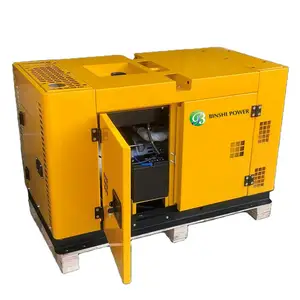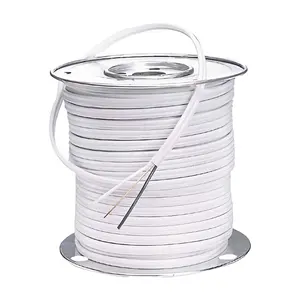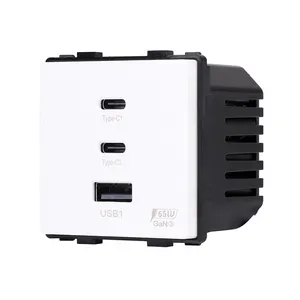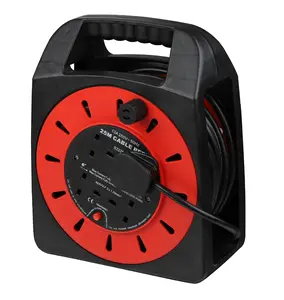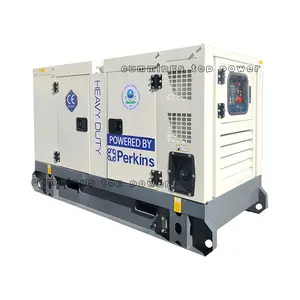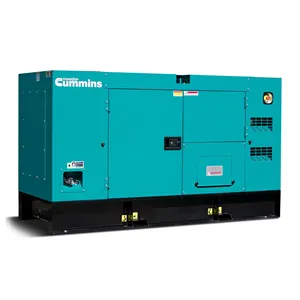Popular in your industry





















































































































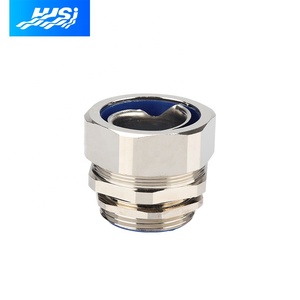



























































































Top categories
About flexible conduit gland
In the intricate world of electrical installations, the selection of the right flexible conduit gland is not just a matter of functionality—it's a commitment to safety, efficiency, and longevity. These vital components, often overlooked, play a pivotal role in protecting and managing cable systems across a myriad of environments. From the bustling floor of an industrial plant to the exposed decks of maritime vessels, flexible conduit glands ensure that electrical systems remain intact and operational. This article delves into the materials, features, and applications of flexible conduit glands, guiding you through the nuances of choosing the perfect fit for your specific needs.
Understanding Flexible Conduit Glands

Flexible conduit glands, also known as conduit connectors, are designed to interface with various types of conduits, including those that are steel braided, un-braided, or come with PVC or Nylon coatings. They are also suitable for liquid-tight coated conduits and flexible PVC and Nylon conduits. These connectors are available in multiple designs and models to accommodate the diverse needs of electrical installations.
The range of conduit glands includes options made from Polyamide with metallic threads, showcasing the variety of materials used to meet different environmental and mechanical requirements. The adaptability of these glands is further emphasized by the availability of specialized or customized options to suit unique or specific applications.
It is important to note that while dimensions are a critical aspect of selecting the right conduit gland, they are subject to change and should be verified for each application. This highlights the importance of flexibility and customization in the use of conduit glands for electrical installations.
Types of Flexible Conduit Glands on Alibaba.com
Alibaba.com showcases a diverse array of flexible conduit glands designed to accommodate a variety of cabling needs. These include brass cable glands with customizable IP68 waterproof ratings, ensuring a secure and moisture-resistant seal for cable entries. The selection also features top-grade metal conduit fittings, such as adaptors and connectors, which offer robust solutions for cable management. For environments requiring enhanced protection, the range extends to nylon multi-hole cable glands, which provide multiple entry points while maintaining the integrity of the seal.
The platform also lists specialized options like strain relief glands, which not only secure cables but also protect them from tension and stress. For industrial applications, there are glands suitable for polyamide flexible pipe fittings and various industrial conduit fittings, highlighting their versatility across different sectors. Moreover, the assortment includes quick coupling nylon flexible conduit hose glands, designed for rapid and reliable connections.
For those seeking specific material compositions, the offerings encompass PVC, zinc alloy, and stainless steel glands, each catering to different durability and resistance requirements. The glands come in various sizes and types, such as fixed and swivel models, to ensure a perfect fit for any application. This variety underscores the importance of selecting the right gland type to ensure optimal performance and safety in electrical installations.
Material Selection for Conduit Glands

Flexible conduit glands are essential components in various electrical installations, designed to attach and secure the end of a flexible conduit to a box or enclosure. The selection of materials for these glands is crucial as it determines their durability, resistance to environmental factors, and suitability for different applications.
Polyamide, commonly used in plastic cable glands, offers versatility in color and is known for its robustness. Polycarbonate is another thermoplastic that shares similar properties with polyamide, often utilized in parts like the flange elbow of certain series.
Polyethylene is used sparingly, for instance in thread seals, due to its resistance to a variety of substances including polar solvents, acids, and bases. PVDF stands out for its excellent chemical durability and mechanical properties, making it suitable for harsh environments.
Metal options include nickel-plated brass, which provides good resistance to steam and various liquids, and is enhanced for wear and corrosion resistance through its plating. Brass itself, an alloy of copper and zinc, is appropriate for non-corrosive environments and offers good resistance to a range of substances.
Stainless steel variants like AISI 303 and AISI 316L are also available, with the latter being particularly ideal for chemically aggressive conditions or marine applications due to its superior corrosion resistance.
Sealing materials complement the glands with NBR offering excellent resistance to oils and fuels, FKM excelling in high-temperature environments and resistance to oils, and VMQ silicone being suitable for extreme temperatures while also being UV and ozone stable. TPE and composite materials are other options, each with specific resistances suitable for various industrial requirements.
Key Features of High-Quality Conduit Glands
Cable glands, essential for cable management, ensure safety and ease of use. They serve not only to pass cables through panels but also to secure cable ends, preventing twisting and potential spark generation. Their design can minimize fire exposure and protect against dust and pollutants, thus prolonging the life of components. Different types of cable glands cater to various specifications and needs, with some designed to ground cable shielding effectively. This is crucial in environments with electronic instruments and data transfer applications, where EMI/RFI interference must be managed.
Material choice in cable glands is significant, with metal options offering durability in harsh environments and plastic variants providing flexibility and resistance to water, salt, weak acids, and grease. Specialized cable glands are available for unique conditions, such as split-able glands that maintain an IP67 seal, explosion-proof glands for spark prevention, liquid-tight glands for wet environments, and fire-prevention glands designed to withstand fire hazards.
Applications of Flexible Conduit Glands in Various Industries

Flexible conduit systems, including glands, are essential in safeguarding electrical wiring from various operational conditions. These systems are crucial in environments that require protection against stress, strain, corrosion, heat, and moisture. The versatility of flexible conduits allows them to be used in a wide range of industrial, residential, and commercial settings. For instance, they are integral in connecting and protecting electrical systems in different locales, whether on land, at sea, or in the air. The conduits are designed to withstand harsh weather conditions, making them suitable for outdoor applications such as powering air conditioning units. Additionally, their use extends to areas with exposure to sunlight and extreme weather, highlighting their UV resistance and durability. The liquid-tight features of certain conduit types make them ideal for installations that may encounter wet conditions or require burial underground. The adaptability of these conduits to various environmental factors makes them a reliable choice for diverse industry applications.
Advantages of Using the Right Conduit Gland
Flexible conduit glands offer significant advantages for cable management and protection. Their simplicity allows for the grouping of standard and single core cables into one system, eliminating the need for specialized cables. This not only streamlines the installation process but also contributes to a cleaner and more organized cable infrastructure. The speed of installation is enhanced as fewer cable entry points and terminations are required, and the ease of fixing with various securing options simplifies the overall process, often without the need for special tools.
The design of flexible conduit glands provides a lifetime solution for cabling systems. They facilitate the addition of circuits throughout the life of the installation and can easily accommodate changes, reflecting the evolving needs of the installation. Moreover, the system integrity is assured as the properties of the conduit can be tailored to meet the specific hazards of the environment, ensuring a reliable protection for critical cabling.
When compared to rigid conduits, flexible conduit glands present similar advantages, offering a versatile and adaptable solution for cable management. They are designed to withstand various installation environments, which is essential for maintaining the longevity and reliability of the cabling system. The use of flexible conduit glands is a strategic choice for those seeking an efficient and dependable method to manage and protect cables in a range of applications.
How to Choose the Right Conduit Gland for Your Needs
When selecting a flexible conduit gland, it's crucial to consider various factors to ensure you choose the right one for your specific needs. Start by identifying the type of cable you'll be using, as well as its diameter. The material of the cable gland is also important; options include Polyamide 6, nickel-plated brass, and stainless steel, each offering different benefits. Additionally, ensure the cable gland meets the necessary approval requirements for your industry, which will allow for use with power, control, and data cables in various applications.
The selection process should involve careful consideration of the cable's characteristics and the environment in which the gland will operate. Factors such as grounding requirements, exposure to the elements, and the presence of electromagnetic interference can influence the type of gland you'll need. By aligning your cable and material requirements with these considerations, you can achieve optimal protection for your cable terminations and ensure a reliable connection in your machinery or control cabinets.
Installation Tips for Flexible Conduit Glands
For a successful installation of flexible conduit glands, it's essential to follow comprehensive guides that accompany product shipments. These instructions are tailored to ensure that each step of the installation process is executed correctly, which is crucial for the performance and safety of the conduit glands. The availability of these guides in multiple languages, such as English, Russian, French, and others, underscores the importance of clear and accessible information for a global audience. It's advisable to download and keep an electronic version of these guides for reference during the installation process. While the original content suggests contacting a support team for further assistance, it's recommended to consult with a professional if any uncertainties arise during installation to ensure the integrity of the electrical system.
Conclusion: Maximizing Efficiency with the Ideal Conduit Gland
Choosing the right flexible conduit gland is a critical decision that impacts the safety, efficiency, and durability of electrical installations. The journey from understanding the various types available on platforms like Alibaba.com to recognizing the importance of material selection underscores the complexity of this choice. High-quality glands not only secure and protect cables but also offer ease of installation and adaptability to changing needs. Industries across the spectrum rely on these components to safeguard against environmental challenges, with the right selection ensuring seamless operation. When selecting a conduit gland, it's essential to consider the type of cable, environmental conditions, and specific industry standards to ensure optimal performance. Installation should be carried out with precision, adhering to the guidelines provided to maintain system integrity. In conclusion, investing time in selecting the ideal flexible conduit gland pays dividends in the form of a reliable, organized, and safe electrical infrastructure.
